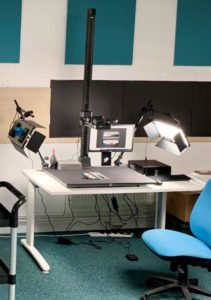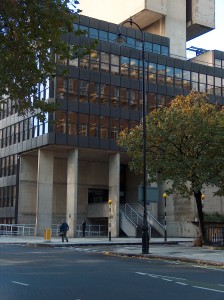Digitising The Law Society’s examinations papers – an Institute of Advanced Legal Studies (IALS) project in collaboration with Ancestry
By Clare Cowling, IALS Archivist
About the IALS Archives: the IALS Archives was established in the 1990s during the Records of Legal Education Project, funded by the Leverhulme Trust to investigate records of legal education. During the project IALS accepted a number of collections from individuals and organisations which otherwise had no institutional archives or were at risk of loss. Since the end of the project IALS has continued to accept deposits of archive material relating to legal education.
About the project: in 2021 the IALS Archives reached an agreement with Ancestry for the company to digitise 440 volumes containing lists of candidates for Law Society examinations plus their results. The records and copyright in them were passed from The Law Society to the IALS by Deed of Gift in 2007. The digitisation project ran from May to September 2021 and centred upon unlocking global digital access to examination records dating from the 1860s to the 1940s.
The work entailed the creation of almost 110,000 images sourced from more than 400 bound volumes. Ancestry has kindly supplied the digitisation equipment. The digitisation took place on-site at IALS using a ‘planetary’ set up (see image below), in which a camera is tethered to a tower, and images are captured from an overhead position. Each page was captured individually. The digitisation work was undertaken by a team of three Ancestry.com staff, including Zoë Karens, a qualified archivist who has previously worked on several cataloguing projects relating to the IALS archive collections.
The images will now be subject to a series of rigorous internal quality assurance processes prior to their online publication on the Ancestry.com website, estimated to take place during 2022. Once the digitisation is completed the company will create a comprehensive index to the contents and make both the index and the digitised material available on its subscription website. IALS will receive a complete digital copy for our own use.
About Ancestry®: Ancestry®, the global leader in family history and consumer genomics, empowers journeys of personal discovery to enrich lives. With an unparalleled collection of more than 30 billion records and over 20 million people in our growing DNA network, customers can discover their family story and gain a new level of understanding about their lives. For over 30 years, Ancestry has built trusted relationships with millions of people who have chosen it as the platform for discovering, preserving and sharing the most important information about themselves and their families.
About The Law Society: The Law Society was founded in London in 1825 as the Society of Attorneys, Solicitors, Proctors and others not being barristers, having been previously established in 1823 as The London Law Institution. It acquired its first Royal Charter in 1831 and a further charter in 1845 established it as an independent professional organisation. The Society has delivered legal education in England since 1835 and has set examinations since 1836. It also has a representational role for the profession. Its regulatory functions were passed to the Solicitors’ Regulation Authority in January 2007.
About the collection: the collection comprises candidate lists and examination results for England, 1836–1984; examination papers, 1932, 1960 and 1980–1982; correspondence, examination results and papers, Colonial and Commonwealth, 1887–1984. They are arranged by examination in chronological order. Candidate information and examination results are closed for 75 years to protect personal privacy in accordance with the Data Protection Act.
There were three reasons for digitising this collection:
- The records are contained in fragile volumes, constant use of which could damage them.
- Those records which are on open access (in other words, more than 75 years old) are among the most heavily used collections in the Archives.
- Although there is an index at the front of each volume, finding entries for individuals in response to enquiries is a cumbersome and time-consuming process, diverting the Archives’ limited resources from other essential work.
We hope that digitising this material will mean quicker and more productive access to these fascinating records than has hitherto been possible.


